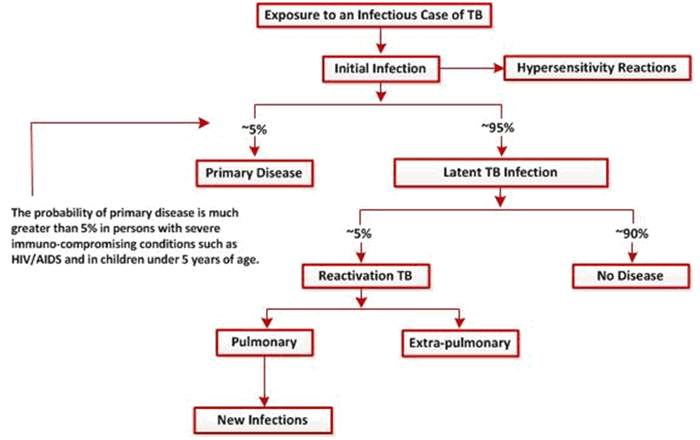TuberculosisToday By Pooja Iyer
Pathogenesis of TB:
-
An infected individual releases droplets containing tubercle bacilli, that are inhaled by a healthy individual. These droplets then travel to the alveoli present in lungs.
-
In the alveoli, tubercles multiply in number. Some tubercles may enter the bloodstream and travel to different parts of the body such as brain, larynx, spine, bone, kidney, etc.
-
Within 2 to 8 weeks of infection, macrophages are activated in the alveoli which start engulfing the tubercle bacilli. Many such macrophages form Granuloma (called Gohn Focus), a shield or barrier which contains the bacilli from multiplying. (Latent Tuberculosis Infection)
-
If the immune system fails to keep the bacteria under control, the bacteria start to multiply rapidly, causing TB disease.
Extrapulmonary TB:
-
The above described process can occur in any part of the body.
-
Miliary TB: Characterized by spots all over the body or found in a specific organ. Mostly occurs in children younger than 5 years of age.
-
Potts's Disease: Occurs when TB infection of spine reaches to the spinal ligaments.
Sources:
https://www.cdc.gov/tb/education/corecurr/pdf/chapter2.pdf
.png)
.png)
.png)
.png)
.png)


